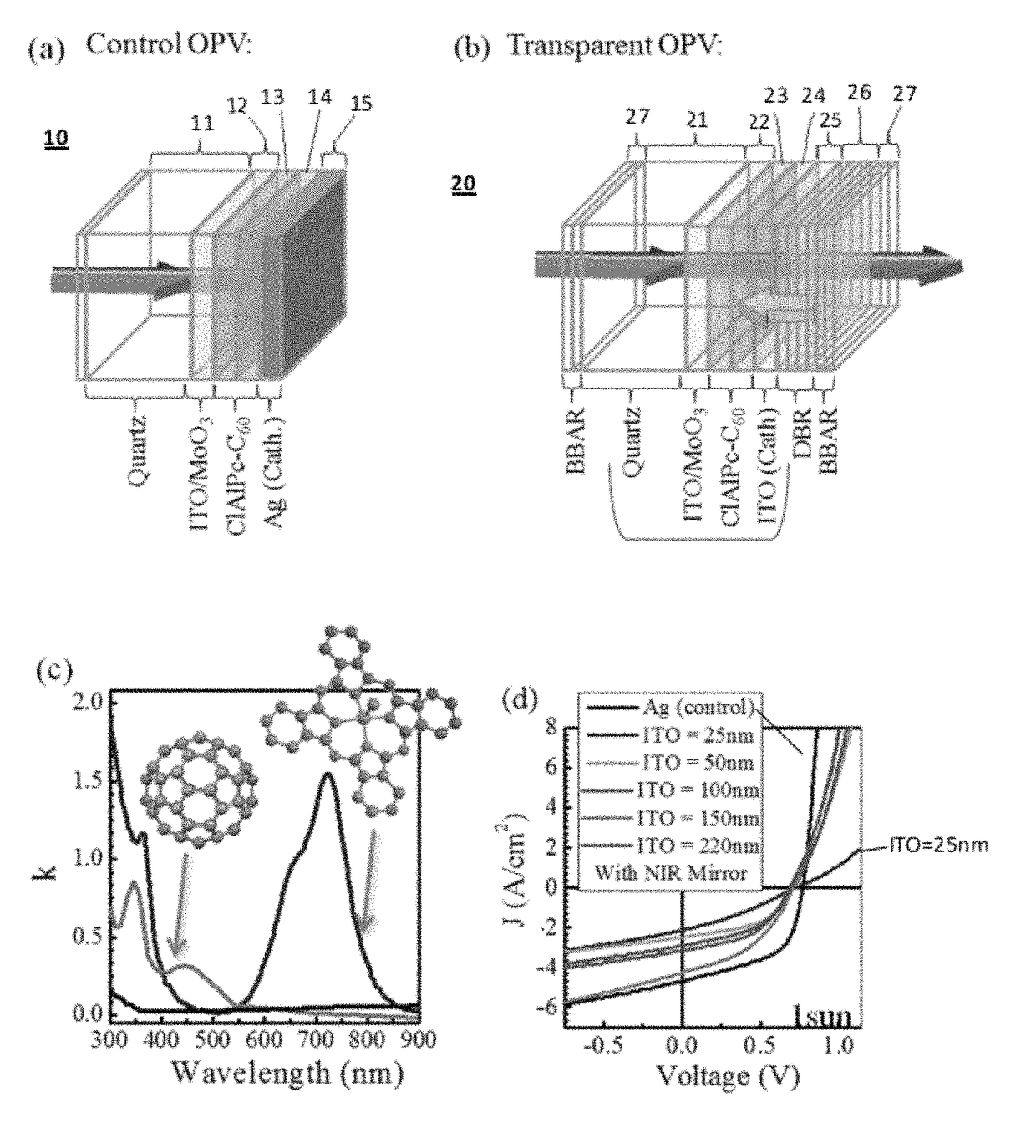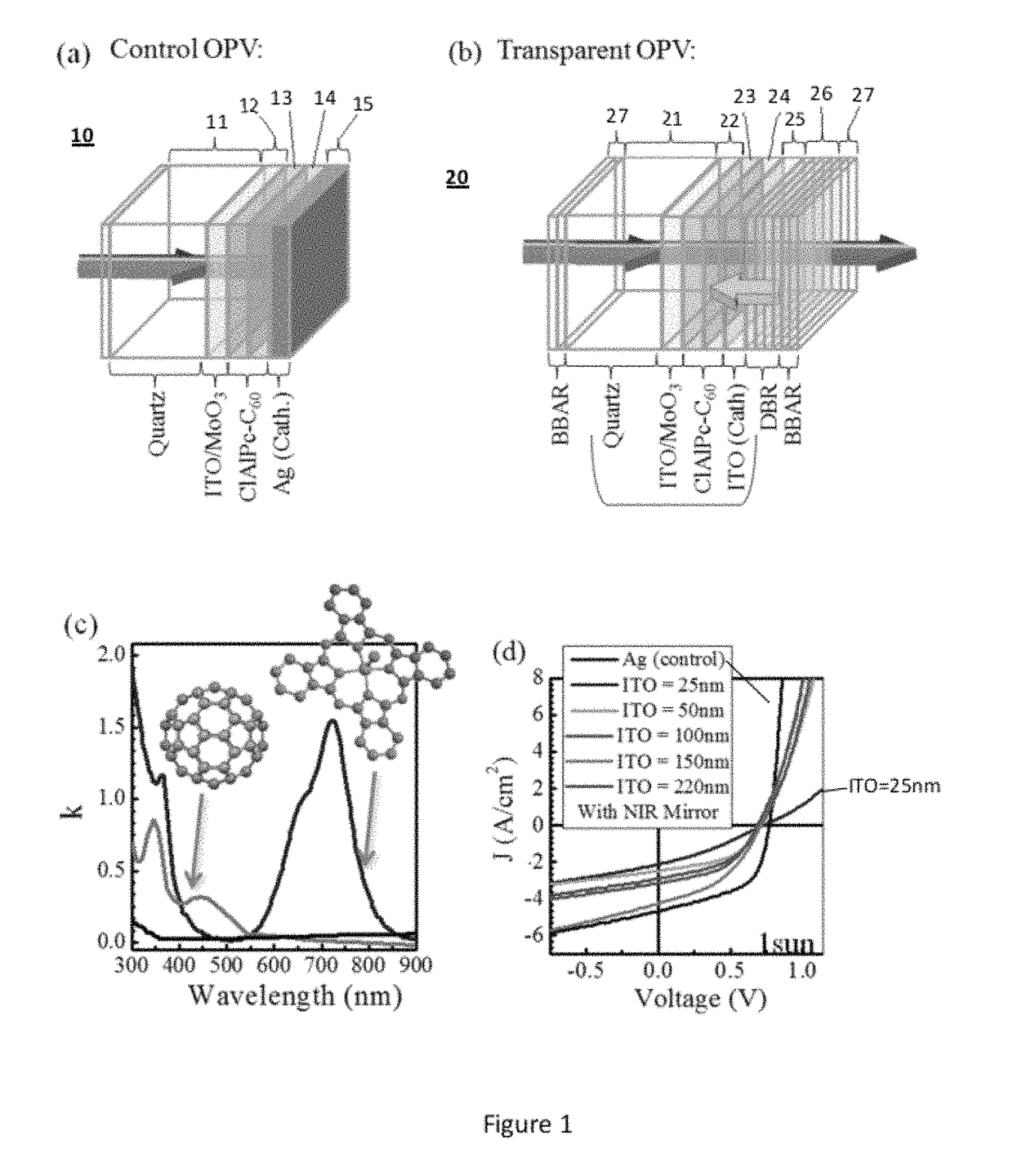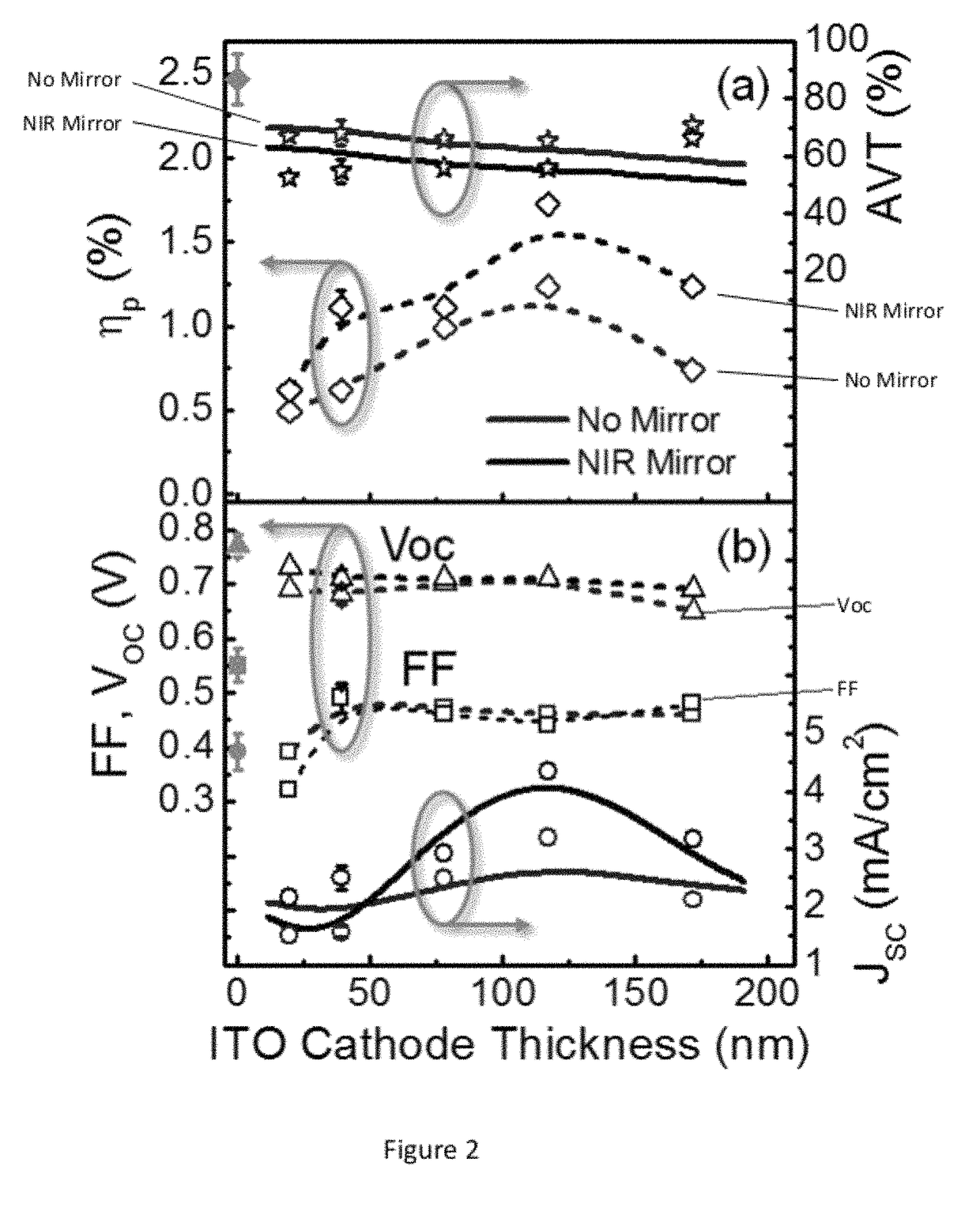Transparent photovoltaic cells
a photovoltaic cell and transparent technology, applied in the field of photovoltaic devices, can solve the problems of limited mechanical flexibility, high module cost, and the surface area necessary to take advantage of solar energy remains an obstacle to offset a significant portion of non-renewable energy consumption, and achieve the effect of maximizing the absorption of near infrared light in the infrared-absorbing active layer
- Summary
- Abstract
- Description
- Claims
- Application Information
AI Technical Summary
Benefits of technology
Problems solved by technology
Method used
Image
Examples
Embodiment Construction
[0037]Described herein are improved transparent solar cell designs, e.g., transparent organic photovoltaic devices (TOPV). The term transparent as used herein encompasses an average visible transparency of a straight through beam of 45% or more. The term semi-transparent as used herein encompasses an average visible transparency of a straight through beam of approximately 10%-45%. In general, the designs include molecular active layers with strong absorption features outside of the visible light spectrum, e.g., in the ultra-violet (UV) and / or near-infrared (NIR) solar spectrum. The devices may include selective high-reflectivity NIR and broadband anti-reflection contact coatings. Devices may be formed as heterojunction solar cells with an organic active layer, such as chloroaluminum phthalocyanine (ClAlPc) or SnPc as a donor and a molecular active layer such as C60 acting as an acceptor and having peak-absorption in the UV and NIR solar spectrum. Other suitable materials for the act...
PUM
 Login to View More
Login to View More Abstract
Description
Claims
Application Information
 Login to View More
Login to View More - R&D
- Intellectual Property
- Life Sciences
- Materials
- Tech Scout
- Unparalleled Data Quality
- Higher Quality Content
- 60% Fewer Hallucinations
Browse by: Latest US Patents, China's latest patents, Technical Efficacy Thesaurus, Application Domain, Technology Topic, Popular Technical Reports.
© 2025 PatSnap. All rights reserved.Legal|Privacy policy|Modern Slavery Act Transparency Statement|Sitemap|About US| Contact US: help@patsnap.com



